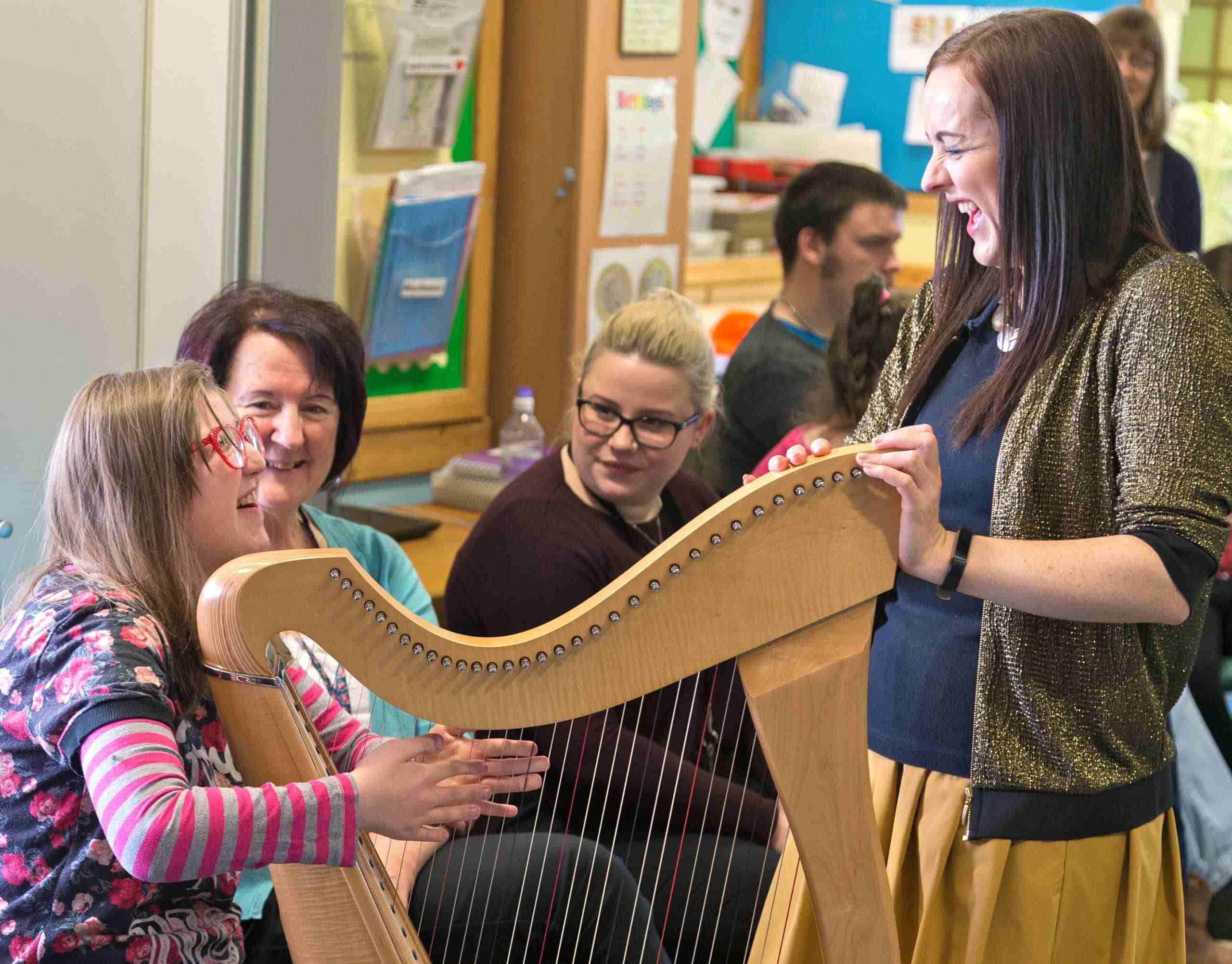
Harps are not just beautiful instruments; they also have a remarkable impact on people's well-being. In hospitals, the soothing melodies of harp music can provide comfort and healing to patients. As we delve into the fascinating world of harps, we discover their rich history, diverse forms, and unique qualities that make them a perfect choice for creating a calming atmosphere in healthcare settings. From their ancient origins to their modern-day therapeutic applications, harps have a timeless allure that transcends cultural boundaries. In this article, we will explore 20 captivating facts about harps, shedding light on their profound significance in the context of hospitals. Join us on a journey through the enchanting realm of harp music and discover why these majestic instruments are cherished for their ability to bring solace and serenity to those in need.
Key Takeaways:
- Harps have a rich history dating back over 5,000 years and are used in hospitals to promote relaxation, reduce stress, and provide comfort to patients and healthcare providers.
- The soothing melodies of harp music have been shown to have a calming effect on the body’s energy systems, promoting balance and harmony, and aiding in the healing process.
20 Fascinating Facts About Harps for Hospitals
Harps are not only beautiful instruments but also hold a special place in the world of music and healing. Here are 20 fascinating facts about harps for hospitals that showcase their rich history and therapeutic benefits.
The harp is one of the oldest known instruments, with a history dating back over 5,000 years.
The harp's origins can be traced to ancient civilizations such as Mesopotamia and Egypt, where it was revered for its ethereal sound and symbolic significance.
Harps are often associated with angels and heavenly realms due to their celestial sound and elegant appearance.
The harp's serene melodies have long been linked to spirituality and are believed to have a calming and uplifting effect on the listener.
The modern concert harp typically has 47 strings, although smaller and larger versions exist.
These strings are meticulously tuned to produce a wide range of harmonious notes, providing a soothing and enchanting musical experience.
Harps are featured in various mythologies and folklore, often representing love, healing, and the divine.
Their presence in ancient tales and legends underscores their enduring association with tranquility and emotional well-being.
Harp therapy is a recognized form of healing that harnesses the instrument's soothing qualities to promote relaxation and reduce stress.
In healthcare settings, harp music has been shown to alleviate pain, anxiety, and depression, offering patients a holistic approach to recovery.
The harp's gentle vibrations are believed to have a positive impact on the body's energy systems, promoting balance and harmony.
This holistic perspective underscores the instrument's potential to enhance overall well-being and aid in the healing process.
Harps come in various shapes and sizes, including the pedal harp, lever harp, Celtic harp, and electric harp, each with its unique characteristics and capabilities.
This diversity allows for a broad spectrum of musical expression and therapeutic applications.
The harp is often used in hospice care and palliative settings to provide comfort and solace to patients and their loved ones.
Its tranquil melodies offer a sense of peace and serenity during challenging times, fostering a supportive and compassionate environment.
Harp music has been integrated into pain management programs, where its calming effects help reduce the perception of discomfort and promote relaxation.
This approach complements traditional medical interventions, contributing to a comprehensive and patient-centered approach to care.
The harp's ethereal sound has been likened to a "sonic hug," enveloping listeners in a cocoon of tranquility and warmth.
This enveloping quality makes it a valuable tool in creating a soothing and nurturing atmosphere within healthcare facilities.
Harp therapy is not limited to physical health but also extends to emotional and spiritual well-being, addressing the holistic needs of individuals in medical care.
This comprehensive approach acknowledges the interconnectedness of mind, body, and spirit in the healing process.
The harp's resonance and reverberations have been found to have a calming effect on the nervous system, promoting relaxation and reducing stress hormones.
This physiological response underscores the instrument's potential to support mental and emotional well-being.
Harp music has been integrated into preoperative and postoperative care, where it helps alleviate anxiety and create a tranquil environment for patients undergoing surgical procedures.
Its calming influence contributes to a more positive and comfortable experience for individuals navigating medical interventions.
The harp's soothing melodies have been shown to slow down heart rate and breathing, inducing a state of deep relaxation and inner calm.
This physiological response aligns with the instrument's ability to promote a sense of peace and well-being.
Harp therapy is not only beneficial for patients but also extends its healing touch to healthcare providers, offering them moments of respite and rejuvenation amidst their demanding roles.
The harmonious sounds of the harp provide a source of solace and renewal for those dedicated to caring for others.
The harp's versatility allows it to adapt to a wide range of musical genres, from classical and folk to contemporary and improvisational styles.
This adaptability enables harpists to tailor their music to suit the specific needs and preferences of diverse audiences.
Harp music has been embraced as a form of expressive arts therapy, offering individuals an avenue for creative self-expression and emotional release.
This therapeutic modality harnesses the harp's emotive potential to facilitate healing and personal growth.
The harp's presence in hospitals and healthcare settings reflects a growing recognition of the profound impact of music on healing and well-being.
Its integration into holistic care approaches signifies a shift towards more inclusive and patient-centered healthcare practices.
The "20 Fascinating Facts About Harps for Hospitals" serve as a testament to the enduring legacy and therapeutic potential of this ancient instrument, offering a harmonious bridge between music and healing.
As the healing power of harp music continues to resonate within healthcare environments, it reaffirms the profound impact of music on the human experience and the journey towards holistic well-being.
Conclusion
In conclusion, harps have an illustrious history and a significant impact on healing and well-being. These fascinating instruments have been utilized in hospitals to provide therapeutic benefits, offering comfort and solace to patients, families, and medical staff. With their soothing melodies and calming presence, harps create a serene environment that promotes relaxation and aids in the healing process. The intricate craftsmanship and ethereal sounds of harps continue to captivate audiences and contribute to the holistic approach of healthcare. As the timeless allure of harps persists, their role in hospitals as agents of healing and tranquility remains an enduring and invaluable contribution to the well-being of individuals.
FAQs
Q: How are harps beneficial in hospitals?
A: Harps in hospitals have been shown to reduce stress, anxiety, and pain, promoting a calm and healing environment for patients, families, and medical staff.
Q: Are harps commonly used in healthcare settings?
A: Yes, harp therapy is increasingly recognized and employed in hospitals, hospices, and healthcare facilities worldwide due to its therapeutic effects and positive impact on well-being.
Was this page helpful?
Our commitment to delivering trustworthy and engaging content is at the heart of what we do. Each fact on our site is contributed by real users like you, bringing a wealth of diverse insights and information. To ensure the highest standards of accuracy and reliability, our dedicated editors meticulously review each submission. This process guarantees that the facts we share are not only fascinating but also credible. Trust in our commitment to quality and authenticity as you explore and learn with us.


